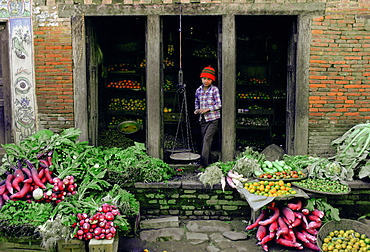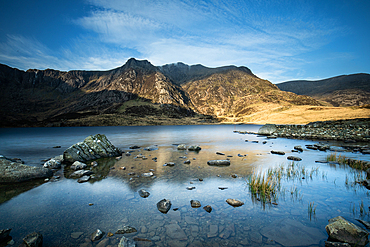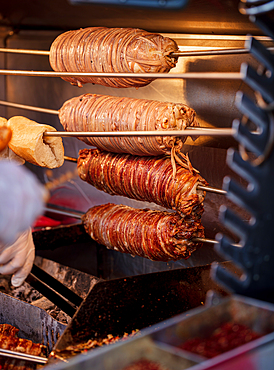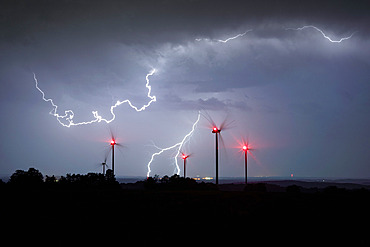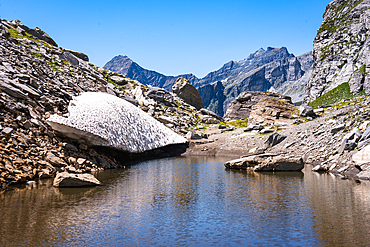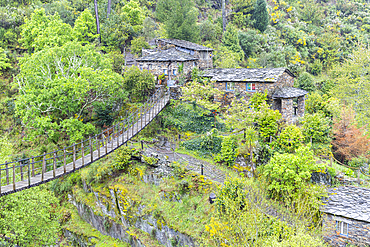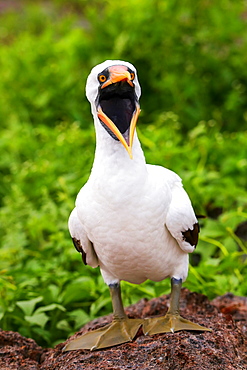Recent searches
Loading...
1383-22 - Dancing and celebrationa at the start of the Ukusefya Pa Ng'wena Ceremony.
1381-22 - Sardar Sarovar Dam viewer's gallery Kevadiya Gujarat India
718-22 - Portrait of a man playing typical instrument, wooden flute, Oruro's carnival, the Devil dance (La Diablada), Oruro, Bolivia, South America
738-22 - Two lambs in June, Shetland Islands, Scotland, UK, Europe
744-22 - Inlaid alabaster unguent jar in the form of an ibex, with one natural horn, from the tomb of the pharaoh Tutankhamun, discovered in the Valley of the Kings, Thebes, Egypt, North Africa, Africa
776-22 - Painting a shop on Republique Street, Fort-de-France, Martinique, French Antilles, West Indies, Caribbean, Central America
367-6283 - City of London, Square Mile, panorama shows completed 22 Bishopsgate tower, London, England, United Kingdom, Europe
784-22 - Giant Buddha, UNESCO World Heritage Site, Leshan, Sichuan, China, Asia
795-22 - Blue heron standing in water, Maldives, Indian Ocean, Asia
799-22 - Cliffs near Foreland Point, Lynmouth, Exmoor National Park, Devon, England, United Kingdom, Europe
812-22 - Aircraft taking off from Heathrow passing in front of full moon, London, England, United Kingdom, Europe
813-22 - Reflection of Lutheran Cathedral, Senate Square, Helsinki, Finland, Scandinavia, Europe
823-22 - Aerial image of Osborne House, Isle of Wight, England, United Kingdom, Europe
824-22 - A moon jellyfish catches the sunlight, Antigua, Leeward Islands, West Indies, Caribbean, Central America
1163-22 - Taling Chan floating market, Bangkok, Thailand, Southeast Asia, Asia
1108-22 - Northern gannet (Sula bassana) in flight, United Kingdom, Europe
1161-22 - A young boy in a checked shirt and red knitted hat in the doorway of a fruit and vegetable shop in Patan, Nepal
821-22 - Interior of the Main Hall, The Museum of Egyptian Antiquities (Egyptian Museum), Cairo, Egypt, North Africa, Africa
817-439521 - A 22 year old blond woman jogging in an urban environment.
1216-22 - Highland cow, Scotland, United Kingdom, Europe
817-183675 - Pollution and smoke get caught up in a swirl of clouds off on the coasts of Spain bottom center), France (center), the United Kingdom (top center), and Ireland (under cloud at top left) in this true-color Aqua MODIS image acquired on March 22, 2003
817-424156 - Shop of Alfareria Pablo & Paco Tito,pottery,Calle Valencia 22,Ubeda, Andalusia, Spain
1132-22 - Close-up of the Reichstag at night, Berlin, Germany, Europe
817-410339 - Olive baboon, Papio Anubis, Olive baboons are widespread throughout equatorial Africa and are found in 25 countries. From the west coast of Africa moving eastward. In the picture there is a mother with a juvenile, the mother is eating some grass and the s. Olive baboon, Papio Anubis, Olive baboons are widespread throughout equatorial Africa and are found in 25 countries. From the west coast of Africa moving eastward. In the picture there is a mother with a juvenile, the mother is eating some grass and the small one is in its back. In Uganda, olive baboons live in open woodland bordered by savannah and in evergreen tropical forests At Queen Elizabeth National Park, situated in Uganda, near the border of Democratic Republic of Congo, the habitat is characterized by dense forest, coarse wet grass, short grass and open grassland. Olive baboons consume a wide variety of foods and they can adapt to very different kind of habitats, from desert to mountain forest because they have many different strategies and habilities to extract food and nutrients. Baboons are omnivores and consume a huge variety of vegetables, insects, birds, eggs, and vertebrates including other primates. The Olive Baboon is one of the largest baboons, with the males being larger than the females. Their body length is 60, 86 cm, their tail length is 41, 58 cm and they weigh between 22 and 37 Kg. There is some geographical variation in average size. They have an olive green/grey coat that covers their bodies and a black face. The males have large canine teeth where as the teeth of females are much smaller. They move around on all four limbs. They live in troops of males and females that consist of between 20 and 50 members. The picture was taken in Ugande, in the Queen Elizabeth National Park, near the Kazinga channel., Uganda, Africa, East-africa
857-67152 - Stephan Begay, five week old Native American Indian baby naps swaddled on a backboard at home on the Navajo Reservation in Northeastern Arizona on March 22, 2007. The baby's mother is Hopi and the father is Navajo, so the baby is part of two tribes. There is a small Hopi Reservation in Kykotsmovi Arizona that is located within the very large Navajo reservation in the northeastern corner of the state, yet intermarriage is rare. Babies are kept on traditional backboards until they start to crawl.
987-22 - webs: between alder branches early morning talsu rajons, latvia
975-22 - Americal style road sign indicating the Stampede road; a mining road built in 1961 to link a previous Trail (Stempede) made famous by the exploits and eventual death of Chris McCandless in 1992. Denali, Alaskan Interior. Denali, Alaska, USA
915-22 - Atlantic Grey Seal mother and pup, Pembrokeshire, Wales, UK, Europe
906-22 - Cock-eyed squid (Histioteuthis bonelli) with sperm whale tooth marks. Greece, Eastern Med.
1060-22 - Antarctic skua attacks sea gull in South Georgia
1194-22 - CAMBODIA Women trained by CSARO to make handicrafts from recycled materials. Some are former waste pickers whose lives have been improved by the project. Kim Savoeun, 49, is the mother of 2 of the girls working here. The settlement slum of San Sok, 10 kilometres outsdie Phnom Penh
858-22 - napha plam tree in sundarban. The Sundarbans, a UNESCO World Heritage Site and a wildlife sanctuary, Sundarbans, Khulna, Bangladesh
1185-22 - Brown bear (grizzly) (Ursus arctos), Montana, United States of America, North America
1275-22 - Mount Robson, Canadian Rockies' highest peak, in the morning, viewed from the Berg Lake, Mount Robson Provincial Park, UNESCO World Heritage Site, Canadian Rockies, British Columbia, Canada, North America
1274-22 - Woman working on one of the world biggest garbage dump with a stork waiting for food, in the Dandora slum of Nairobi, Kenya, East Africa, Africa
1320-22 - Group of horses posing for a portrait in a field, Iceland, Polar Regions
1281-22 - Statue of Buddha inside Wat Rong Suea Ten (Blue Temple) in Chiang Rai, Thailand, Southeast Asia, Asia
1382-22 - Pilies Street with, in the background, the Church Heritage Museumt, Saint Anne's Church and the Church of St. Francis and St. Bernard, seen from the tower of St John's Church, Vilnius, Lithuania, Europe
1384-22 - Temple Of Kukulkan El Castillo pyramid, Chichen Itzá Mayan ruins, Yucatan, Mexico
809-2721 - A 22-year old dervish, Myrteza Shehu, reading under a tree in Melani tekke, Vranishti, Girokastre, Albania, Europe
857-63602 - The full moon rises near the Portland Headlight on December 22, 1999 in Cape Elizabeth, Maine.
1262-22 - Sikh woman devotee of The Golden Temple of Amritsar, Punjab, India, Asia
1379-22 - Early morning at Llyn Idwal, Snowdonia, North Wales
1171-22 - Reflections at Castle Bruchsal, Baden-Wurttemberg, Germany, Europe
1306-22 - Multi-colored tents at the Rod Fai night market Ratchada, Bangkok, Thailand, Southeast Asia, Asia
1376-22 - Reflections from Rydal Cave, Lake District National Park, UNESCO World Heritage Site, Cumbria, England, United Kingdom, Europe
1378-22 - Turkish street food Kokorech baking on the skewer. Istanbul. Turkey
832-402366 - July 19, 2020, Des Moines, Iowa, USA: Des Moines is the capital of Iowa. It was incorporated on September 22 (1851), as Fort Des Moines, which was shortened to
1373-22 - Architectural detail of the New York Public Library (NYPL), second largest in the USA and fourth largest in the world, New York City, United States of America, North America
1228-22 - Reflections on Loch Chon in winter, Aberfoyle, Stirling, The Trossachs, Scotland, United Kingdom, Europe
832-241158 - Photovoltaic solar collectors at the largest photovoltaic power plant in the US, operated by SunEdison, generates 8.22 megawatts, San Luis Valley, Alamosa, Colorado, USA
836-22 - Red deer (Cervus elaphus) hinds, Richmond Park, Surrey, England, United Kingdom, Europe
860-291912 - Thunderstorm on the Gold Coast on the night of 21 to 22 August 2021, France
857-94725 - Ester Hodari, age 22 years old, cooks dinner using the traditional three-rock cook stove with a fire in the middle. These cookstoves use a lot of fuel, firewood, and produce a lot of smoke. Ester told us that cooking with this type of stove made her eyes turn red and she often had a chest cough. Her children, ages 5, 2 and 3 months are often with her when she is cooking. Her sister-in-law, Shadya Jumanne, age 11, helps her cook as well. Not long ago Esterâs 3 month-old developed a cough, It kept getting worse and so they took her by motorcycle to the hospital at night. Ester started really worrying about this. After this Ester and her husband agreed that they needed to buy a clean cookstove and started saving. The girl helping Ester cook in some of the images is her sister-in-law Shadya Jumanne, age 11. Ester met Solar Sister entrepreneur Fatma Mziray when she married her husband and moved to this village, Mforo near Moshi, Tanzania. Ester said that Fatma is like a mother to her in the village. When Fatma showed Ester the new wood stove she saw that is used less wood and produced less smoke.
1372-22 - Remains of a snow field in the Alps melting into a lake on an alpine mountain pass, the Alps, Piemonte (Piedmont) Northern Italy, Europe
832-402722 - Germany, Heringsdorf, 22.07.2023, Kaiserbaeder, sea view, lamps, telescope, Europe
802-22 - A woman climbing on cliffs opposite Cathedral Rock, near El Capitan, Yosemite Valley, California, United States of America, North America
1106-22 - Wild Bengal tiger (Panthera tigris tigris), Bandhavgarh Tiger Reserve, Madhya Pradesh, India, Asia
940-22 - Barnacles (Barnacle sp.) on rock in intertidal zone, Fingal Heads, New South Wales, Australia, Pacific
1370-22 - Colourful boats in front of Himalayan peaks on Lake Pokhara in Pokhara, Nepal, Asia
1348-5435 - Color satellite image of Ho Chi Minh City, Vietnam. Image collected on February 22, 2020 by Sentinel-2 satellites.
1369-22 - Aerial view of Saxholl crater, Hellisandur, Snæfellsnes Peninsula, Iceland, Polar Regions
483-22 - Aerial view of rural road lined with cypress trees, Tuscany, Italy, Europe
1226-22 - Merlion statue, the national symbol of Singapore and its most famous landmark, Merlion Park, Marina Bay, Singapore, Southeast Asia, Asia
1102-22 - Storm force Levante winds blowing the tops of waves, Strait of Gibraltar, Estrecho Natural Park, Los Lanses beach, Tarifa, Andalucia, Costa de la Luz, Spain, Europe
1067-22 - Clark's anemonefish (Amphiprion clarkii) in host anemone (Entacmaea quadricolor). Komodo, Indonesia, Pacific Ocean.
1366-1160 - Europe, Portugal, Coimbra. April 22, 2022. Church of Santa Cruz, which houses the tomb of Portugal's first monarch.
805-22 - Three construction workers at the Amber Palace, Amber, Jaipur, Rajasthan, India, Asia
832-360274 - Airbus A310-304 (10+22) VIP C/N 499 (DDR-ABB D-AOAB Interflug) Theodor Heuss, VIP squadron, Federal Ministry of defence, Germany
1034-22 - Humpback whale (Megaptera novaeangliae) cow and calf, underwater, Tonga, South Pacific
918-22 - Cargo of acacia wood, an introduced species, Balikpapan Bay, East Kalimantan, Borneo, Indonesia, Southeast Asia, Asia
1366-189 - Abu Simbel, Aswan, Egypt. February 22, 2022. Night time light show projected onto the Great Temple of Ramesses II.
857-90616 - UNALASKA, AK - JUNE 22: A group of western Stellar sea lions (Eumetopias jubatus) congregate on a rocky outcrop along the Aleutian chain on Unalaska Island, Alaska on June 22, 2008. The western Stellar sea lion. the largest of all sea lions, is considered endangered with the reason for its decline uknown. (Photo By Dan Rafla/Aurora), United States of America
1366-1159 - Europe, Portugal, Piadao. April 22, 2022. Suspension bridge leading to a stone house.
1167-22 - View into Zion Canyon from trail to Observation Point, Zion National Park, Utah, United States of America, North America
860-285765 - 22-spot ladybird on a white flower, Alsace France
1104-22 - Central Concert Hall designed by Italian architects Manfredi and Luca Nicoletti, Astana, Kazakhstan, Central Asia, Asia
1256-22 - Nazca Booby (Sula granti) with open mouth, Genovesa Island, Galapagos National Park, Ecuador, South
america
1314-22 - Kinkaku-ji (Golden Pavilion) (Rokuon-ji), Zen Buddhist temple, reflected in the lake surrounded by a scenic park, UNESCO World Heritage Site, Kyoto, Japan, Asia
1302-22 - Old American car, Malecon, Havana, Cuba, West Indies, Caribbean, Central America
1031-22 - The mine uses the most sophisticated modern mining techniques to bring grit salt to the surface, including a laser guided JOY excavator and mechanical drills and lift.
1267-22 - A packed Bondi Beach on a summer's day, Sydney, New South Wales, Australia, Pacific
1366-637 - Colfax, Washington, USA. May 22, 2021. Sign advertising burgers for a small town cafe. Editorial Use Only
763-22 - A farmer bathing his horses in the River Miel near Baracoa in eastern Cuba, Cuba
817-418080 - Luang Phabang, Laos-July 22, 2009 Every day very early in the morning, hundreds of monks walk the streets to beg
844-22 - Palazzo Della Ragione, Piazza Vecchia, Bergamo, Lombardy, Italy, Europe
857-3922 - The hunter is Paul Nagmalik, age 22. Paul drew the tag to go on a polar bear hunt out of Igloolik. Paul told me he was anxious to make a future as a hunter.
1286-22 - Chiang Mai Flower Festival 2018, Chiang Mai, Thailand, Southeast Asia, Asia
1366-638 - Pullman, Washington, USA. May 22, 2021. A red weathered farm building in a wheat field in the Palouse hills. Editorial Use Only
1321-22 - The farmers who grow and harvest sedge in Vung Liem, Vinh Long, Vietnam, Indochina, Southeast Asia, Asia
764-22 - Lion (Panthera leo) on termite mound, Queen Elizabeth National Park, Uganda, East Africa, Africa
367-6317 - Cityscape with complete 22 Bishopsgate Tower and Southwark Bridge at dusk, London, England, United Kingdom, Europe
1001-22 - Five-Spot Burnet (Zygaena trifolii);Rhodopi Mountains;Bulgaria;Europe
1283-887 - Famous tram line no. 22 passing at the St. Ignatius church in the New Town District, Prague, Bohemia, Czech Republic, Europe
367-6284 - City of London, Square Mile, panorama shows completed 22 Bishopsgate tower, London, England, United Kingdom, Europe
809-2723 - A 22-year old dervish, Myrteza Shehu, in Melani tekke, Vranishti, Girokastre, Albania, Europe
1176-22 - Leadenhall Market, London, England, United Kingdom, Europe

















